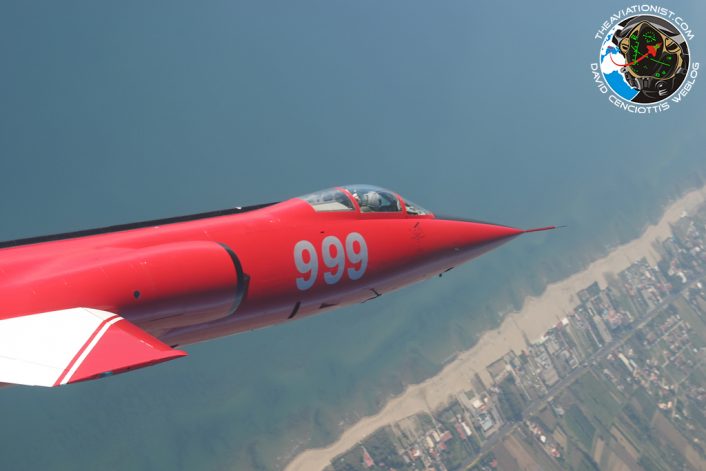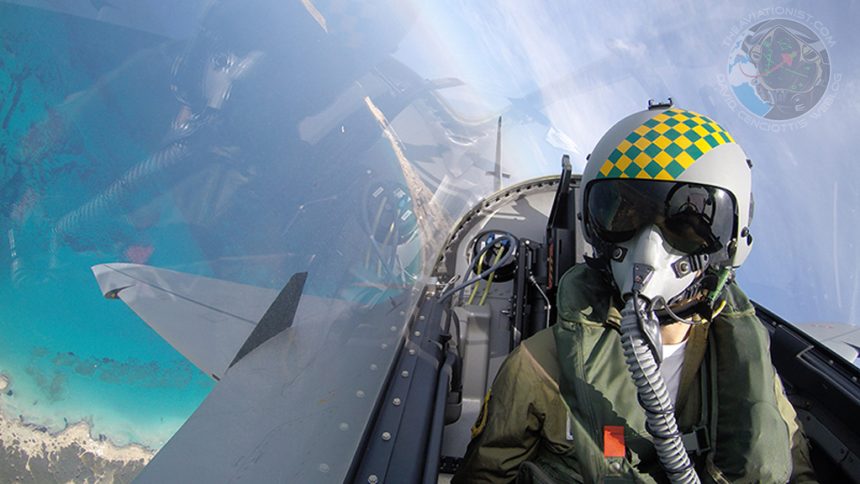I’m often asked what flying in a military jet looks like and how I do prepare for such missions. Here are some tips that might be useful to get the most out of your fast jet ride.
May 25, 2017
“Raven 08, Deci Tower, cleared for take-off, wind calm”.
I’m in the backseat of a Tornado IDS belonging to the 154° Gruppo (Squadron) of the 6° Stormo (Wing) from Ghedi, currently deployed to Decimomannu airbase, Italy, for the yearly training activity in the Sardinian firing ranges. The words of the controller, that I can hear quite clearly before the noise will spread through the cockpit making all the subsequent communications barely readable, have a double meaning to me: first, they give the “go ahead” to the most exciting part of my flight in a Tornado (the very first one on this kind of aircraft); second, they mark the end of the long and delicate stage of the jet flight preparation; a preparation that determines either the success or failure of the sortie from the journalistic point of view.
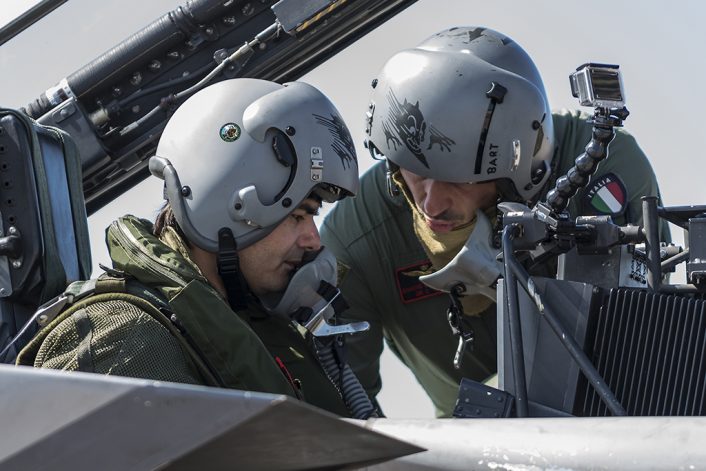
A flight in a jet usually lasts between 45 and 110 minutes (longer if it includes aerial refueling, but it’s not the case): in my case, fully exploiting the (short) time available to “observe” a mission from the inside and collect all the photos and video material for both aviation magazines, this blog and its connected social networks, is paramount. A flight in a combat aircraft represents an almost unique opportunity and it is important to make the most out of it. If something in the backseat goes wrong, if a camera body fails or a lens proves to be unsuitable for the photo session, there will hardly be a second chance. In about 20 years I’ve had this opportunity quite a few times, hence here are a few suggestions based on my little (if compared to others) experience in a combat aircraft. If you are going to fly in fast jet for the first time, because you were invited or simply because you’ve paid for a ride, maybe the following few tips will help you maximize your experience.
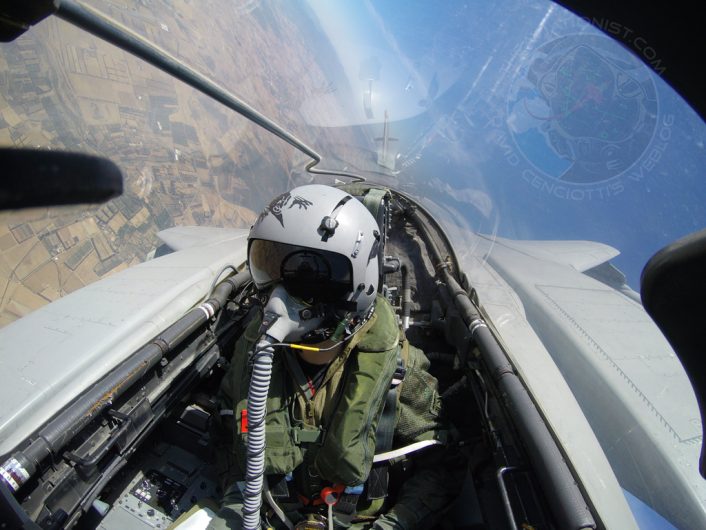
Even though the thrill of flying in a jet fighter is always the same, learning from the past mistakes as well as the experience gained over the years, have been pivotal to perfecting the preparation of the mission so as to minimize the risk that something unexpected can jeopardize the reportage’s success. For example, during one of my first jet flights, to have a back-up in case of problems with the main camera, I decided to put a compact camera in one of the pockets of the flight suit, the one located more or less over the right’s lower leg. Fortunately I did not need it. In fact, I hadn’t taken into account that the anti-G suit, dressed over the normal flight suit, would have made the “emergency” camera inaccessible during the flight! Since then, I only use the pockets of the anti-G pants for all those small accessories I might need in the cockpit.
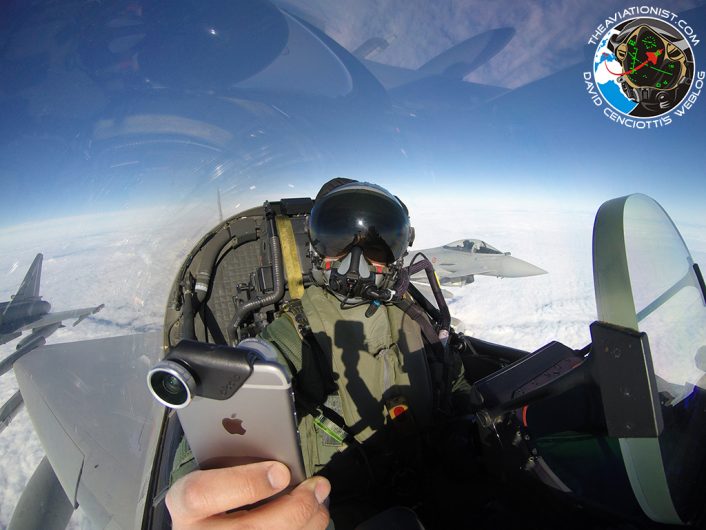
With regard to the flight gear, in addition to my mask, I always try to use my own helmet, which is also easily recognizable by the bright yellow-green checkerboard on the cover (check the top photograph). However, this is not always possible: for instance, in the case of the Eurofighter, the aircrews have to use the specific flight equipment designed for the Typhoon flight line which differs from that used on any other Italian Air Force aircraft and includes, among the other things, a Gentex ACS (Aircrew Combat System) helmet and an EFA / ACS mask. For my flight in the Tornado, I had to use to an HGU-55G helmet, with the characteristic 154th squadron’s “red devil” symbol painted on the cover, that I was lent by the unit.
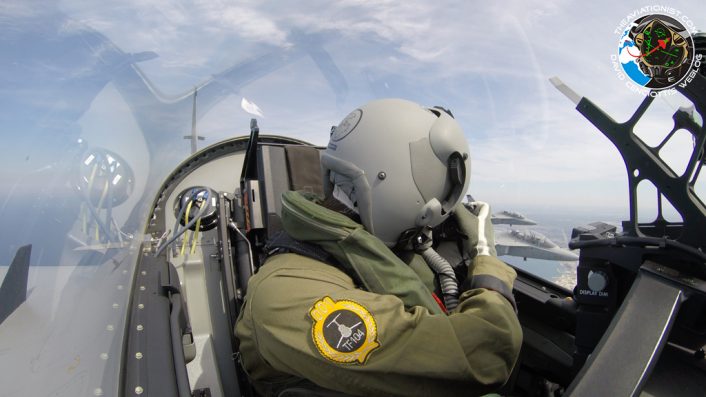
Back to the preparation of the mission, once the flight gear’s check and fitting have been completed, I think the most important thing is the inspection of the rear cockpit of the aircraft: it is essential to know how to “move” in the backseat, where to attach the GoPro so that it is both stable and reachable (to modify some settings or move it), evaluate the size of any storage compartment to see if it can be used to accommodate a camera body or lens. In fact, digital cameras have greatly simplified life in a jet: when I was still using color slide films I needed to change the rolls several times during the flight. This forced me to continuously estimate the number of photographs I could take so that I didn’t run out of shots during a maneuver: in order to replace the finished roll with a new one, it was necessary to remove the gloves, be more or less stable (that is, in level flight) and have the time to safely remove and store the used roll before inserting a new one; an operation that would take just a few seconds in other conditions but, performed in a very narrow space, strapped into the ejection seat, wearing the heavy helmet, the mask, the Secumar, etc., was, especially at the beginning, quite challenging. With the advent of digital photography, this problem has been solved.
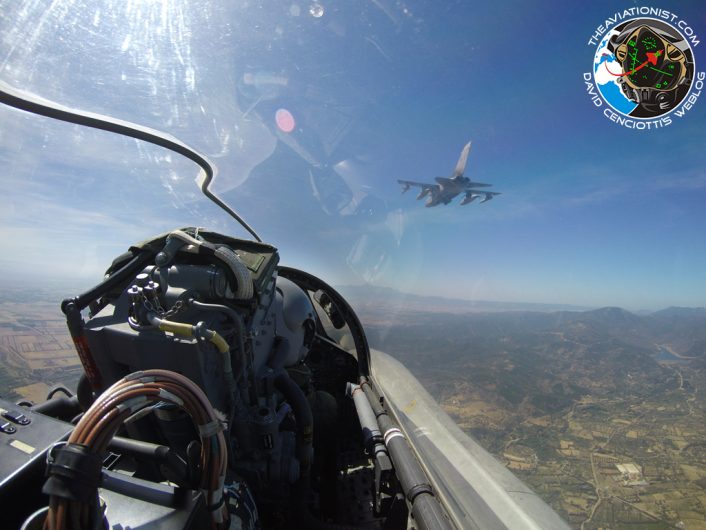
Returning to the preparation of the flight, once understood how to move (or not move) in the rear cockpit, it is important to discuss with the crews that will take part in the mission and determine which phases of the missions will be suitable for some aerial shots. Although I have had the opportunity to arrange “pure” air-to-air photo sessions, I usually prefer to take part in missions that bring me in the aircraft’s operational environment: I am a journalist and I find it much more interesting for my readers (and for myself) to see and recount the mission from a privileged point of view, focusing on both the tactical aspects of the flight and the technical details of the employed weapon systems. This means that the time available for photography is normally reduced to about ten minutes: during the transition to the operating zone or during the RTB (Return To Base) phase.
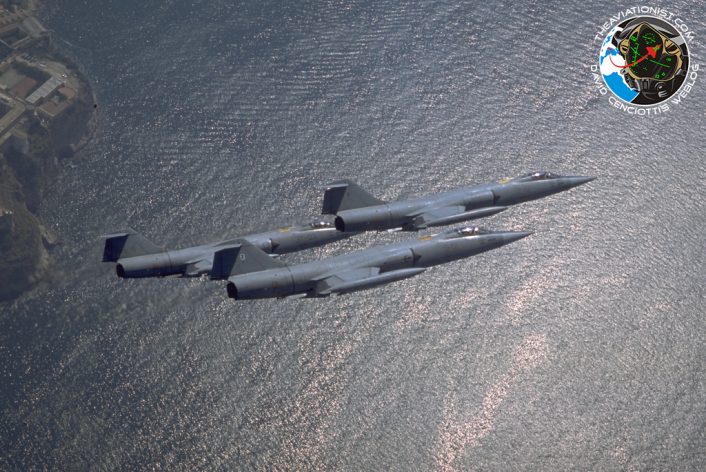
Obviously, a sortie with well-defined operational goals leaves little room for aerobatics or formations flying in favor of light: if you are part of a 3-ship that is acting as “Red Air” in a 4 vs 3 supersonic training mission, as in my flight in the Eurofighter, the aircraft will fly towards the operational area in fighting wing, with a significant spacing from one another, and the time for close formation will be reduced to a few minutes. However, as I have already explained, I prefer a few clicks from a realistic operational situation rather than taking part in a sortie that is particularly cool from a photographic point of view, but “poor” from the operational one. Generally, “how to arrange the aircraft” and “when to take photographs” are topics discussed with the aircrews during the briefing and reviewed, if necessary, during the flight, asking the pilot in the front seat to assume a specific attitude so as to obtain a particular shot.

Dealing with the photographic equipment, in addition to the GoPro and camera, I bring with me what I need inside a large removable pocket that comes with velcro to be attached to the anti-G at the thigh: here is where I put spare batteries or extra lenses, like fisheye and zoom for the iPhone, used to take short videos or photos that complement the work of the DSLR camera. As for the camera, I strongly recommend removing any type of strap to prevent it from coming into contact with the stick, throttle or, worse, with the ejection seat handle. From 1999 to today I have carried several camera bodies with me, but the lens I prefer in the backseat is almost always the Canon 28-135 USM, an extremely reliable, versatile and lightweight lens, more than adequate for my needs. If you do not have hundreds of flights under your belt, photographing air-to-air from the cockpit of a military aircraft is not an easy task: properly framing the other jets during some maneuvers requires some physical effort (the camera is subject to the same accelerations as aircraft meaning that in a 5 g turn the camera weighs five times its weight on the ground …) and gives very nauseous feelings too. Luckily, I have never needed it, but I always bring a bag for nausea in the anti-G pocket; I also drink a lot of water and limit carbohydrates, alcohol or spicy foods ahead of flying. Anyway, pro photographers, with hundred if not thousand flight hours in fast jets, such as Katsuhiko “Katsu” Tokunaga, Jamie Hunter or Frank Crebas (to name but few) may provide much more expert advice about air-to-air photography and related tips and tricks.

The opportunity to fly in a high-performance aircraft every now and then has given me some exciting and long-lasting memories: the formation aerobatics with the TF-104, the BBQ (Ultra-low level flying) with AMX, the LIFT (Lead In Fighter Trainer) sortie with the T-346A or the supersonic BVR (Beyond Visual Range) interception flown as Aggressor with the Eurofighter. True adventures that I have tried to describe not only with my stories published on both The Aviationist website, the world’s most important media outlets and the books I’ve written or contributed to, but also by means of the shots you can find in this article.
